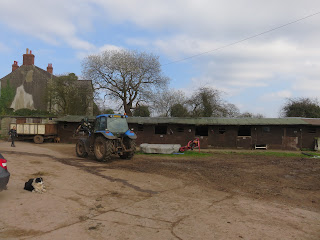A lot more to the town of Quinta Do Conde
Map of the Ecological Park (Photo: Steve Andrews)
If you were driving through on the main road through the town of Quinta do Conde in Portugal you might not think there was much to see there. You might think it was merely a typical Portuguese town with plenty of houses, apartment blocks, local businesses, a share of restaurants and bars, as well as shops, roads, and all the usual urban ingredients. A pleasant enough place if you lived or worked there perhaps, but not a lot else there, and not much to see. However, you would be very wrong. If you are interested in nature, ecology and gardening, Quinta Do Conde has an amazing Ecological Park known as the Parque Ecológico da Várzea da Quinta do Conde. This park is actually right next to the main road, and just minutes from the busy local Continente and Pingo Doce supermarkets, but it is a real haven for wildlife, a wonderful place for relaxing, and it even has an allotment area where local people can grow fruit and vegetables.
Turtle Lake and White Storks
Lagoa Cagados (Photo: Steve Andrews)
The Ecological Park has a lake known as Lagoa Cagados, which means Turtle Lake in Portuguese and presumably refers to freshwater terrapins that can be found there. I didn’t see any any when I visited but I did see a number of frogs jumping into the water. They were Iberian Water Frogs, a species that is common here. There is a large area of swampy meadow where I have seen flocks of White Storks gather. They are easy to see from the main road and I have noticed them on my way to the shops. I expect these large birds are hunting frogs that are plentiful in the park. I saw more of these amphibians in a reedy pool but the creatures were too quick for me to get any photos.
According to an information plaque, Grey Herons also frequent the wetlands provided here. I am not surprised because there are many ponds, water canals and reed-beds. In one part there is a lookout point for birdwatchers.
Swampy Meadow Where Storks Gather (Photo: Steve Andrews)
Walking Areas
Pussy Willow (Photo: Steve Andrews)
I noticed a lot of Fennel sprouting amongst the greenery, and this plant is eaten by the caterpillars of the Swallowtail Butterfly, which breeds in the park. I found a clump of Salad Burnet too, which is another edible herb.
Salad Burnet (Photo: Steve Andrews)
Woodlands
There are plenty of trees and woodland areas in the Ecological Park and many of the trees are labelled. I saw an Alder covered in catkins, and there are also Cork Oaks, Pines, and at least one Strawberry Tree. In one part of woodland I noticed a large pile of rocks. It had been fenced off and I wondered if this was intended as a place for reptiles and amphibians to shelter and hibernate in winter. It would make a great place for this. According to an information board I saw, the Viperine and Ladder Snake can be found there, as can Fire Salamanders and the Common Toad. I would not be at all surprised. It is simply a wonderful location for wildlife of most types.
Fish and amphibians (Photo: Steve Andrews)
The Allotments
Nest-box (Photo: Steve Andrews)
Here in the allotment section, local gardeners grow cabbages, kale, onions, leeks and many other vegetables.
Vegetable Plot (Photo: Steve Andrews)
The plants all looked very green and healthy, and the plots of ground are watered with water from the ponds and water channels. These pools and areas of freshwater provide further areas for aquatic life, amphibians and water birds, and I could see thousands of the Mosquito Fish (Gambusia holbrooki) in one of the larger ponds. This is a fish I was used to seeing in Tenerife when I lived there some years ago. Mosquito Fish have become naturalised in many subtropical parts of the world where they were originally brought, as their name suggests, in an effort to control mosquitoes. These little fish are very adaptable and can tolerate high and low temperatures, polluted and brackish water.

Pond with water used in the allotments (Photo: Steve Andrews)
I saw a few dragonflies too and would think the park would have loads of these insects later in the year. I am lucky to have this park near to where I live so will be making many more visits and seeing what goes on there in spring and summer. I imagine the ponds will have a loud chorus of frogs and plenty of tadpoles will be swimming in the water. I love the sound of frogs croaking!
Iberian Water Frog (Photo: Steve Andrews)




































